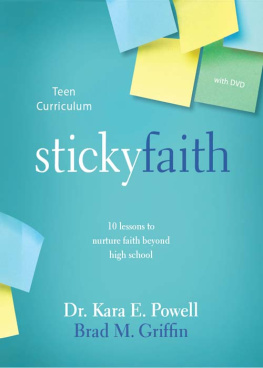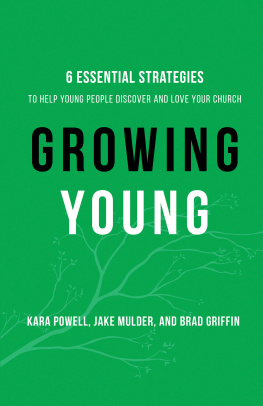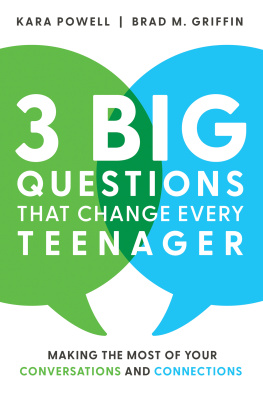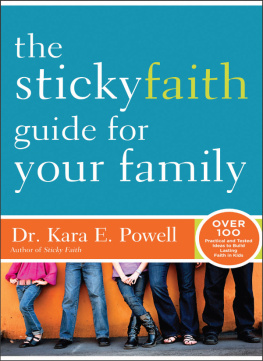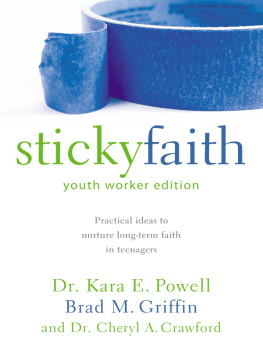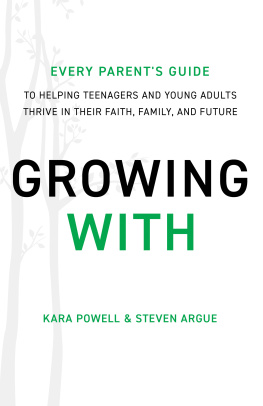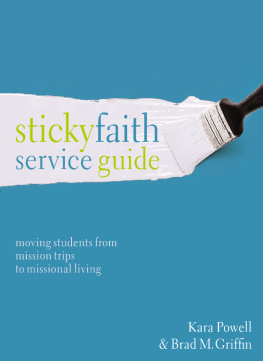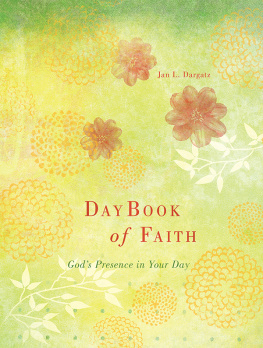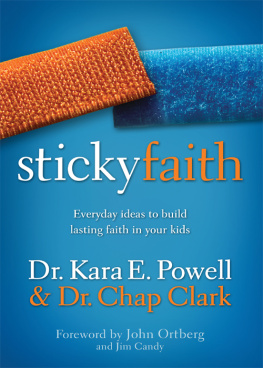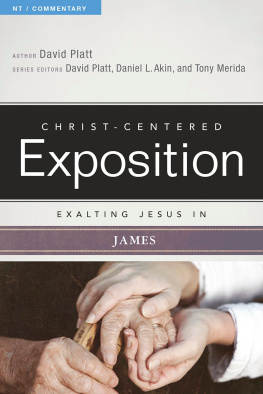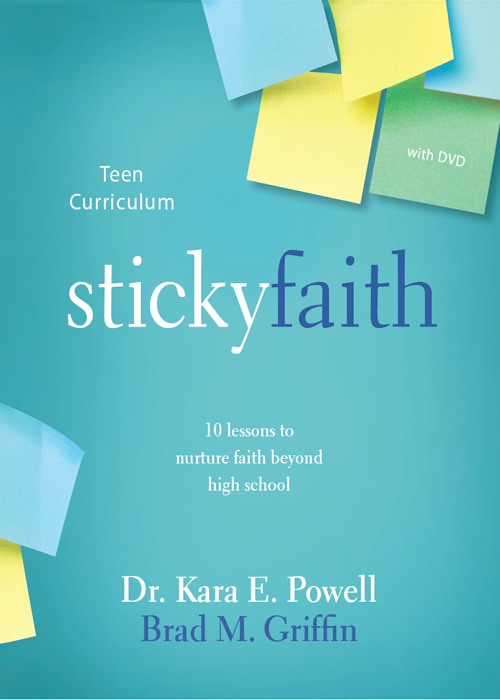When it comes to preparing seniors for life after youth group, these are probably the two most important statistics you need to know:
45 percent and 16 percent.
Approximately 40 to 50 percent of youth group seniors significantly struggle with their faith and with finding a church after graduation.
Only about 16 percent of college freshmen felt well prepared by their youth ministries for what they encountered after graduation.
For us though, this curriculum is about more than numbers. Its about real studentsstudents just like the ones in your ministry right now.
This curriculum is about students like this one who described the overall challenge of transitioning from high school to college:
[Its] like youre leaving on a giant cruise ship. Youre heading out of this harbor, and everyones waving you off. Lets say this ship is your faith. As soon as you start sailing out to this new port called college, you realize youre in a dingy. You dont have this huge ship, and youre completely not prepared, and your boat is sinking! Unless theres someone with a life raft whos ready to say, We got you. Come right here. This is where you can be, and this is where you can grow, youre done.
Real Reflections from Real Students
Graduation is exciting, but also its really scaryand its okay to be scared, its okay to be nervous but jump in with both feet!
The Sticky Faith Movement
Through our mission of leveraging research into resources that elevate leaders, kids, and families, we at the Fuller Youth Institute (FYI) want to partner with you to offer kids a stronger ship of faith and extend a life raft to those who feel like theyre drowning.
In 2004 FYI launched the College Transition Project, a study of nearly 500 American youth group graduates during their transition to college. The goals of this project were to better understand the dynamics of life after youth group and to pinpoint steps that parents, youth leaders, churches, and students themselves could take to help launch students on trajectories of lifelong faith and service.
What started as a handful of research initiatives has become a movementa movement of churches, parents, grandparents, youth leaders, childrens leaders, and senior pastors who want to help students faith not merely survive, but thrive, after high school.
Defining Sticky Faith
The goal of this curriculum isquite simplyto help teenagers develop Sticky Faith. By Sticky Faith we mean a combination of characteristics, all of which exist in a dynamic tension
Faith thats internalized and externalized: a faith thats part of a students thoughts and emotions, and is externalized through choices and actions that reflect that faith commitment. These behaviors include regular attendance in a church/campus group, prayer and Bible reading, service to others, and lower participation in risky behaviors, in particular sex and alcohol consumption. In other words, Sticky Faith involves whole-person life integration, at least to some degree.
Faith thats personal and communal: a faith that celebrates Gods specific care for each person while always locating faith in the global and local church community.
Faith thats mature and maturing: a faith that shows marks of spiritual maturity but is also in the growth process. We dont assume a high school senior or college freshman (or a youth worker for that matter) will have a completely mature faith. Were all in process.
Putting it in even simpler terms, the vast majority of students we interviewedeven those who had thrived in collegereported that college had been both a growing and a challenging experience. Much of that growth and challenge came from the new experiences and perspectives students encountered after graduation. Reading through the transcripts, it seems that the typical college student sits down at a table full of new and interesting worldviews and people; and instead of faith being merely one of many voices clamoring for attention around the table, those with Sticky Faith had determined that their faith would sit at the head of the table.
For more on the questions we asked, please visit
www.stickyfaith.org.
The Two-Word Glue of Sticky Faith
Based on our research and our ongoing theological reflection, if we were asked to summarize the glue that creates Sticky Faith in two words, it would be gospel and identity.
Gospel, of course, is literally the good news of Gods Kingdom plan of saving us and transforming us into Kingdom people through the death and resurrection of Jesus Christ.
Identity is a bit harder to nail down. Quite simply, its a mix of what we think about ourselves and what others think and portray to us about ourselves, which inevitably influencesif not determinesthe choices we make and the way we relate to God and to others. Our identity development is a process; one that started when we took our first breaths and will end when we take our last ones.
We cover the gospel and identity extensively in sessions one and two. But we also encourage you to strengthen the gospel and identity threads that weave their way through this entire curriculum. To help you do that, we have strategically sprinkled gospel and identity discussion questions and learning activities throughout the other eight sessions.
In particular, session two (How Do I See Myself after Graduation?), invites students to complete a handout titled Identity That Sticksthat helps them dream about who they want to beor their identitiesa year from now. Since identity formation is a process, we have tied that particular activity into later sessions so students can continue to edit and expand their views of who God wants them to be after graduation. Therefore we encourage you to collect the Identity That Sticks handouts from your students after theyve filled them out; then, every time you reintroduce the concept of identity during subsequent discussions, give back the Identity That Sticks handouts to your students so they can add to them. Well make all of this clear in the pages that follow, but we wanted to give you a heads-up now.
Why This Curriculum Is Important
One of the questions we most regularly asked youth group graduates was, What advice would you give youth leaders when it comes to their graduating seniors? Their top piece of advice by far was to spend time better preparing seniors for all they would face after graduation. Nothing else came close.
Hence this curriculum.
Six Ways to Get the Most Out of This Sticky Faith Resource
1. Realize (and celebrate) that this curriculum is a mix of Scripture and social science data, a combination of theology and research. Bible-based theology is the heartbeat of this curriculum, but good research conducted by the Fuller Youth Institute and other research centers also pulses throughout. Throughout the sessions weve sprinkled quotes from youth group graduates weve surveyed that you can read yourself or share with your group if youd like.
2. As much as you can, dont force your students to make the Sticky Faith commitments you want them to make. These are seniors, and youve trained them well to think and come to their own conclusions. The students in our study with the most mature faith had wrestled with important faith questions until they came up with their own answers.

